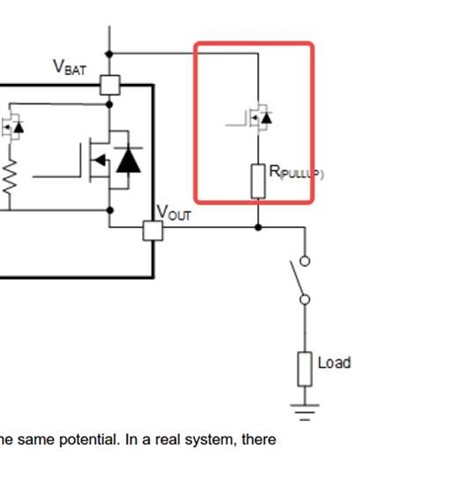Other Parts Discussed in Thread: TPS1HTC30-Q1
Tool/software:
HI experts!
- found a related question in below link that explains the short circuit is disabled when VBB > 18V .https://e2e.ti.com/support/power-management-group/power-management/f/power-management-forum/1308376/tps2hb35-q1-tps2hb35-q1-influenced-ec-spec-under-extended-supply-voltage
- VBB>18V cannot provide short-circuit protection. Does it mean that it cannot guarantee safe protection every time, or does it mean that this function is invalid and cannot be identified and triggered?
- If a short circuit or overcurrent occurs, can it still be reported using vsense?
- Regarding the Iout(standby) question. Figure 7 can not help because VOUT=0V but customer real condition isn't 0V but 4V
- Customer will use the high-side switch in Standby and DIAGNOSTIC modes. Mainly in DIAGNOSTIC mode, the main FET is not turned on, but the internal 1M diagnostic FET is turned on, and at this time, they have a diagnostic structure like the figure below, which causes the VOUT voltage to be pulled up (about 4V). At this time, they want to know the leakage current at the IOUT end. The temperature condition is -40°C to +125°C . And the voltage is 9~18V and 18V~28V for two conditions.

Thanks!
Josh Wei


